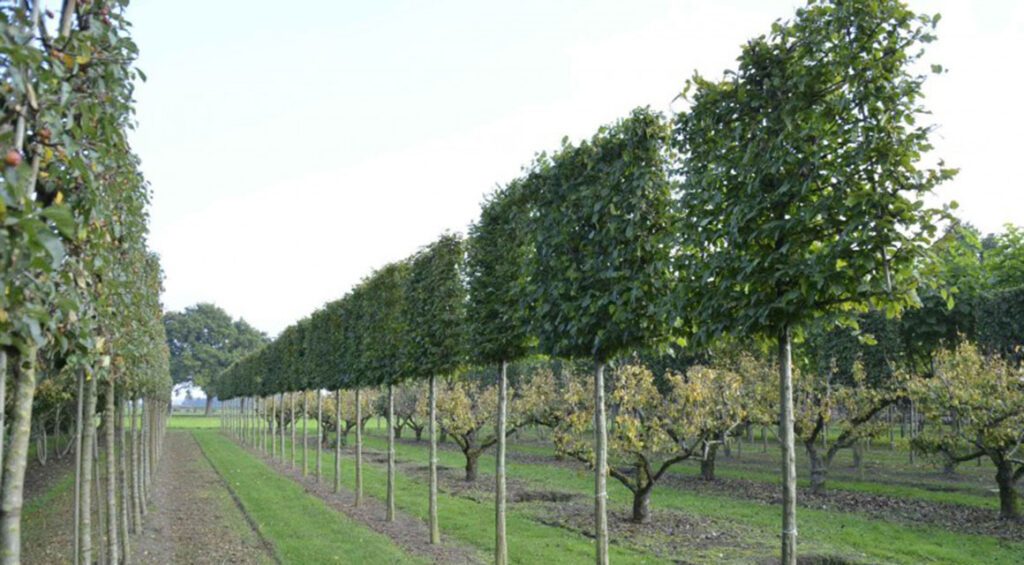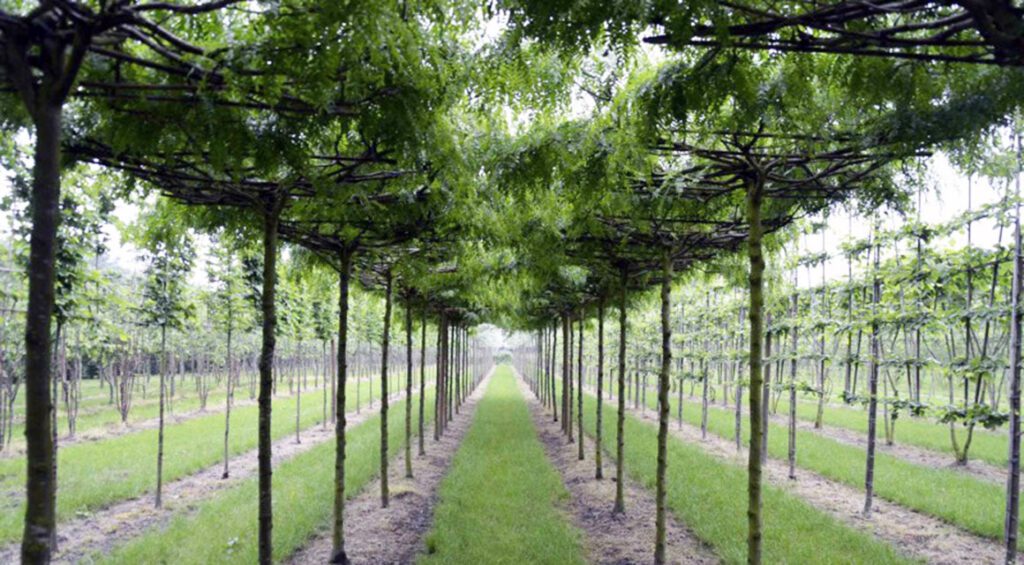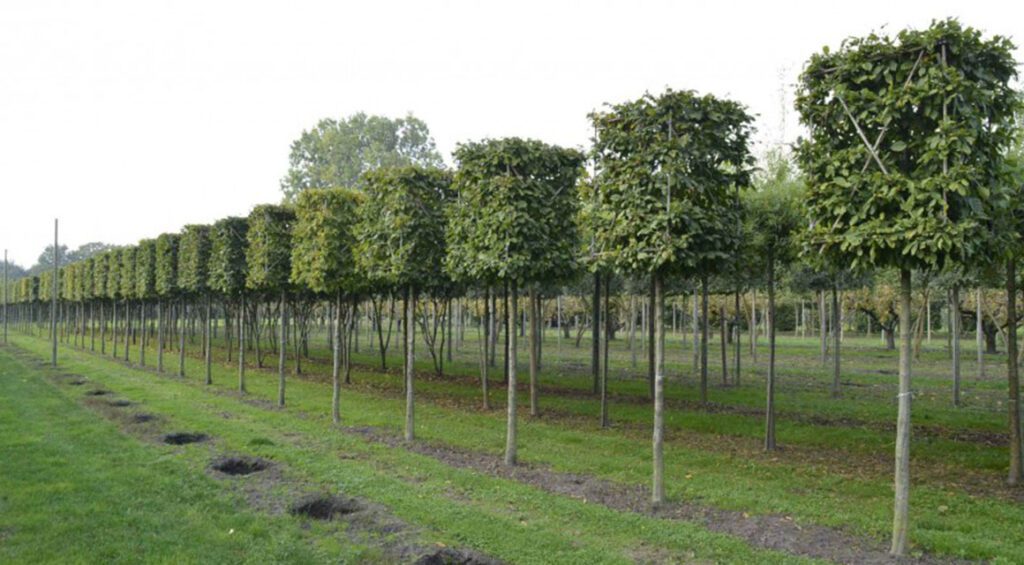Last updated on October 23rd, 2023 at 08:26 pm
Trellis trees: stylish and elegant hedge plants that will make your garden a real work of art. Nowadays, more and more garden owners plant trellis trees in the garden. You can use them in a variety of ways: use them as a garden border or as a means to separate parts of your garden. This will allow your garden to be well organized. When you use espalier trees in your garden, people immediately get the impression that you are a true artist, even though it is quite easy to take care of these topiary plants. You can even buy espalier trees as ready-made hedges, then you only need to cut them back from time to time. The experts at Hedgeonline.com are happy to answer questions that are often asked by our customers: Which trellis tree varieties are there and which variety should I choose?

Contents
Most suitable espalier tree varieties
Various varieties of hedge plants can also be used as espalier trees in the garden. You can think here, for example, the beech hedge. In the webshop you can see exactly in which form each hedge plant is available from us. Therefore, with so many options, you can also realize a unique garden design. You can choose simple and well-known varieties, such as beech hedge, Carpinus betulus and linden hedge. Linden trees have always been popular for cutting into espalier shapes. So for a classic design, linden is probably the exact variety you should choose. Depending on what your budget is and how much space you have in your yard: there is bound to be an espalier tree that will meet your exact needs!

General information about espalier trees
There are basically two different varieties of espalier trees: freshly formed and pre-formed. We are happy to explain what makes the difference between these two varieties. Freshly formed espalier trees are trees that are already prepared as young plants for their final growth form. However, this shape still needs to be formed over time. So they need to be given enough time in your garden to get their final shape. Pre-grown espalier trees have already reached their final shape. You need to plant pregrown espalier trees as only in your garden and prune them back from time to time. Freshly formed trellis trees are available from us in umbrella form, roof form and traditional trellis form. Pre-formed trellis trees are available from us as umbrella shape, roof shape, traditional trellis shape and as a cuboid. In the piece that follows now, we will explain to you exactly what forms we are talking about here and what are the advantages and disadvantages.
Freshly formed trellis trees still need to grow further in your garden, pre-growing trellis trees are already fully grown. Depending on the form, of course, there are differences again. Trellis trees as a screen form ensure that you have enough privacy and protection in the garden. The branches of the topiary plant are then attached to a framework, which consists of bamboo canes. These bamboo canes already form a screen that serves as a base. All you need to do now is make sure that the branches stay within this shape and do not grow beyond it. The cuboid shape is, of course, a tight, geometric shape that can provide even more protection than the umbrella shape. In addition, the cuboid shape also looks particularly artistic. The roof shape has a slightly more informal look than the other trellis shapes, but the roof shape is certainly no less impressive either. Roof shapes are especially good for creating natural arch shapes in the garden. Finally, of course, there is the traditional trellis shape: the branches stick out to the left and right, forming taut lines. The trellis shape is the shape that is most easily perceived by the eye.

How to choose the right trellis tree?
But now comes the question we have all been waiting for: how can I choose the right trellis tree? This can sometimes be difficult, because the assortment in the webshop of Heckenonline.de is quite versatile. First, think carefully about how much time you want to invest in the garden. If you have little time for gardening, then it is best to choose a hedge plant that requires little maintenance. In this regard, we mention here again the beech hedge. Hornbeam is also a good choice. These hedges grow quite quickly and they are adaptable when it comes to the particular conditions in the garden. The hornbeam even in the surroundings of a city quite wonderfully grow and thrive. If you have a smaller garden, then you should choose a hedge plant that has a small and rather narrow growth.
Choose a hedge plant that you like. Do you prefer tight and neat hedges or do you prefer special hedges that get lots of flowers? Do you prefer large or rather small leaves? High or low hedges? You will have your hedge growing in your garden for many years to come, so you should make a sensible choice. The shape of an espalier tree can definitely affect the look of your garden. We have now explained all the different espalier tree shapes. If you prefer protection and privacy in the garden, then you should choose the umbrella or cuboid shape. And once again, in the end, you should choose exactly the shape that you like. The design of your garden is as important as the design of your house. Your personality plays a really big role here. Show that you have a good taste!


